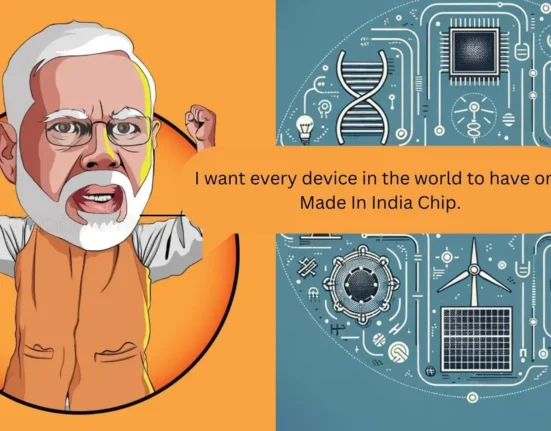Trump Administration Eyes 1:1 Semiconductor Import Rule, Sparking Industry Uncertainty
- by Priyadarshan
- 2 October 2025
- 4 minutes read
The Trump administration is reportedly preparing a sweeping new policy that would require semiconductor companies to manufacture one chip domestically for each chip imported into the United States, or face steep tariffs. The proposed 1:1 semiconductor import rule or say 1:1 production-to-import ratio, first detailed by TechCrunch, aims to supercharge American chip manufacturing but has ignited debate about its feasibility and impact on the industry.
How the 1:1 Chip Policy Would Work
According to a report from Tom’s Hardware, the draft plan would oblige chipmakers to match their U.S. production with the number of chips they import. If a company fails to meet this ratio over time, it could face tariffs as high as 100% on any excess imported chips. Companies pledging to build new U.S. facilities could receive ‘credits’ for planned output, allowing them to continue importing without tariffs while construction is underway.
The Commerce Department, under Secretary Howard Lutnick, is reportedly framing the policy as a matter of national economic security. However, the White House has not formally confirmed the plan, describing current media coverage as speculative until any official announcement is made.
Industry Reaction On 1:1 Semiconductor Import Rule : Skepticism and Supply Chain Concerns
Reaction from industry stakeholders has been swift and skeptical. The U.S. Chamber of Commerce and companies like Intel warn that the cost and complexity of rapidly achieving a 1:1 production-to-import ratio could disrupt existing supply chains and increase costs for American manufacturers. As Reason notes, even a 1% tariff increase on chips could raise construction costs for announced U.S. semiconductor fabs by $3.5 billion. A 100% tariff could add up to $350 billion, threatening to slow investment and innovation.
Building new chip fabrication plants in the U.S. is a slow process. The Chamber of Commerce estimates it takes at least 38 months to construct a fab, plus up to a year for supporting facilities and product qualification. With 90% of global chip fabrication currently occurring abroad, industry leaders argue that a rapid transition is unrealistic and could harm U.S. competitiveness before domestic capacity is ready.
Also Read :Space Based Semiconductor manufacturing just got real.
Implementation Hurdles and Unanswered Questions
The proposed policy raises technical and logistical challenges. Chips vary widely in complexity and value—a million smartphone processors are not equivalent to a million high-performance AI chips. Tracking and verifying the origin of every chip across global supply chains would demand major new compliance efforts from both chipmakers and their customers. The White House has yet to clarify how the government would count or qualify chips for the purposes of tariffs.
Some companies, such as Intel, GlobalFoundries, Micron, Samsung, Texas Instruments, and TSMC, could benefit if they are already expanding U.S. operations. Their negotiating position may strengthen as customers seek to avoid tariffs by sourcing from domestic facilities. However, many industry voices caution that reshoring the entire chip supply chain is not feasible in the short term.
- Airbus Forecasts Massive 19,560 Aircraft Demand Surge in Asia-Pacific by 2045
- African Fintech Startups Expand Services Amid Regional Growth Surge
- Why Tesla May Build Its Own Chip Fab: Breaking Down the AI Semiconductor Push
- Top European Master’s Programs for Chip Design: Opportunities, Trends & Industry Insights
- Qualcomm and MediaTek Ready to Power India’s Chip Manufacturing Surge by 2026
Background: National Security and the Push for Domestic Chips
The Trump administration has intensified its focus on semiconductors as strategic assets essential to U.S. national security. Following the Wall Street Journal’s initial report, Commerce launched a Section 232 investigation into the security implications of imported chips and manufacturing equipment. While no official rule has been published as of September 30, 2025, the administration’s intent to use tariffs as leverage for domestic production is clear.
For readers interested in deeper discussions on tech policy and semiconductors, join our active WireUnwired WhatsApp community to stay informed and share your perspective.
Looking Ahead
While the Trump administration’s proposal could eventually boost U.S. chip manufacturing, most experts agree the transition will be long and fraught with challenges. Industry leaders, analysts, and government agencies continue to debate the best path forward for securing America’s semiconductor future. Until formal rules are announced, uncertainty will remain a defining feature of the U.S. chip landscape.
Discover more from WireUnwired Research
Subscribe to get the latest posts sent to your email.









